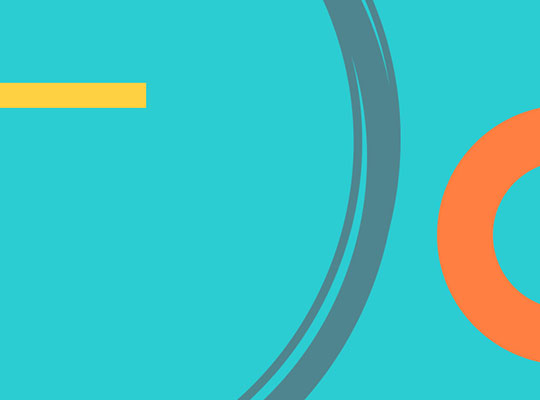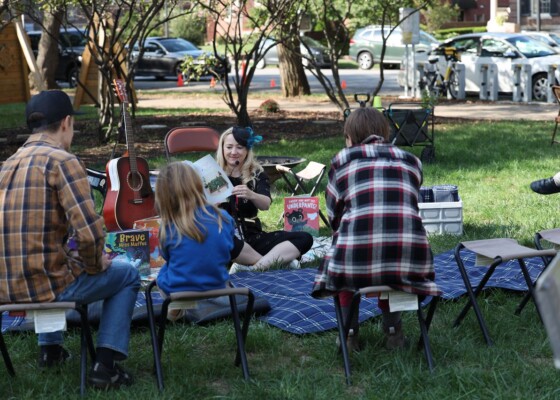Interview with Kevin McKelvey
April 1, 2019Adrian: Thanks so much for talking with me about poems, Kevin. I’m happy that we’re going to get to share your work with the state-wide literary community, especially since you…
Adrian: Thanks so much for talking with me about poems, Kevin. I’m happy that we’re going to get to share your work with the state-wide literary community, especially since you do so much for the writers and readers in Indianapolis. Let’s start with something basic. You’re one of the rare poets who successfully writes poetry and fiction (and nonfiction?). What is poetry for you? What does it do that prose is incapable of doing?
Kevin: I’ve always been interested in all three genres. I like writing all three. I like teaching all three. My poems always meander into myth, fiction, narrative, and expository writing, so working in fiction and nonfiction gives me another outlet for that. But poetry has always been my first passion because I think it’s the highest form of art–above painting, music, photography, the short story. A poet can do things in a few stanzas that might take an essayist twenty pages or a novelist an entire book. That distillation is so integral to poetry. And I love being able to incorporate so many genres and styles and voices. And the sounds. Playing with words, plosives, syllables. That’s a lot of fun, too.
Adrian: Your poetry—especially your book Dream Wilderness Poems—is deeply influenced by the natural world. Can you talk a little bit about that environmental influence? What other ideas, entities, or actions influence your work?
Kevin: I grew up on the edge of a cornfield, so my entire worldview was trees and corn and dirt and deer and hawks and vultures. My parents were teachers, and we spent a lot of time gardening. Many of our neighbors were farmers or carpenters, so we worked with them some. National Geographic turned me into an environmentalist, and hunting turned me into a hiker and canoeist and birder. So I’ve always understood the natural world as a complicated place where humans can coexist with and preserve nature. But cities and industry and capitalism get in the way of that sometimes.
I became interested in tricksters for my Dream Wilderness Poems, and I learned in Lewis Hyde’s Trickster Makes This World that tricksters exist on the edges of humanity and as a messenger with the gods and animals and other entities. I felt that edge to some degree growing up out in the country, that feeling of living between civilization and the world of farming and gardening and animals and plants. And being a poet is about being a bit of a trickster.
So I am interested in myth and history and art and rivers and soil and trees and natural succession and glaciers and gardening and farming and tools and carpentry and the Midwest and drawing and design and places and buildings and cultures and politics and labor and ecology and geology and hydrology and birds and waterlife and prairies and the sky. Poetry allows you to be an autodidact and learn about all of those things and find a place for them in a poem. I’m fortunate in that I can bring this into my teaching and writing and into endeavors like leading hikes and conversations with Indiana Humanities Council’s Next Indiana Campfires.
Adrian: What was your greatest success connected to poetry? Conversely, was there a moment when you were completely embarrassed by or inside of a poem?
Kevin: I can’t pinpoint one success. Poetry has led me to opportunity and possibility. Moreover, it’s connected me with friends and colleagues and students and others who are endeavoring to make Indiana the place I’ve always wanted it to be. I have found a great home at University of Indianapolis, and I was lucky enough to teach at IUPUI, DePauw, and Purdue. I’m still connected with the writing community at DePauw where I went for undergrad and first stumbled into writing as a creative practice and career. The MFA Program at Southern Illinois University Carbondale introduced me to and sustained me in the wider world of writing. I have found many other writing communities through Brick Street Poetry, Writers Center of Indiana, numerous visiting writers series, social media, our state’s universities, and many other ventures. That evolved into creating a student-run publisher at University of Indianapolis, Etchings Press.
My approach to poetry and community work led me to social practice art and creative placemaking where I have focused my energies in multidisciplinary, place-based, collaborative work. I have collaborated with Big Car Collective on many projects, and my recent grants from Indiana Arts Commission and Arts Council of Indianapolis have included elements of this. That work led to UIndy’s new graduate program in Social Practice Art. Since serving as writer-in-residence at H. J. Andrews Experimental Forest and at Isle Royale National Park, I have worked to bring Long-Term Ecological Reflections to Indiana with land trusts. NICHES Land Trust hosts an annual canoe trip on Wildcat Creek, and ACRES Land Trust inaugurated a residency at Wing Haven Preserve.
I’m glad you asked about embarrassment. Our teacher Lucia Perillo told me one time that you can expect about a 2% acceptance rate. I got on a hot streak and hit 2.5% for a few weeks. The rest: rejection. And long periods of it. I “finished” my Dream Wilderness Poems about five different times in the fifteen years I worked on it. About half way through that time and after I published a chapbook of it, I discovered I missed the entire political battle in the 1970s to get the Charles C. Deam Wilderness Area created by federal designation. So I returned to research and site visits and revision and new poems to make it better. That manuscript had some initial interest from a press, but then was rejected. I felt my internal organs in my throat all weekend. Then I got back to work and turned the manuscript into the book I always wanted it to be. And even though I thought I was done with that project, I am now researching and writing about wilderness areas in Ohio and Illinois. So I am embarrassed that it took so long to write and that I missed so much before I got it right, but it has led to publication and other opportunities.
Adrian: Your poems are extraordinarily well crafted and show all of the hallmarks of serious revision. What advice would you give a writer who is having trouble in the revision process?
Kevin: Thank you, but I’m a terrible reviser once a poem is typed into the computer. I do a lot of pre-writing in my head and on paper or notes to myself. I revise as I work on individual lines of a poem on the computer, which involves reading it aloud and mumbling to myself. If it’s on the screen, I need some time away and a good outside reader to really dive in to revision on the screen. I didn’t truly figure out how to write a poem until I was out of graduate school a couple of years (hitting the 10,000 hour mark, I guess). And in pre-writing, writing, and revision, I try to stay focused on sounds, on image or moment or metaphor or magic, on nouns and verbs, on eliminating extra words, on the four or five exact words that turn it into a poem.
Adrian: What Indiana poet are you reading right now (or recently) that other Indiana poets should be reading?
Kevin: I’m lucky enough to teach a poetry literature class at University of Indianapolis, and Indianapolis poets Etheridge Knight and Mari Evans are central to that. Your book Map to the Stars completed the Indianapolis trifecta for that class, and I am always looking for Indiana poets and writers to teach and to invite for UIndy’s Kellogg Writers Series. Bruce Snider’s Paradise, Indiana is one of my favorite books ever, and Todd Davis has a new book out, Native Species. Davis grew up in Indiana and is one of finest poets writing about nature and ecology today.
Persimmon Trees
Thirty years later, I see now
we should have planted
the saplings farther apart,
the trees tall and straight
with little spread. If we had to
pick persimmons from branches,
we’d need a ladder. But they fall
to the ground when ripe,
orange-brown and round
like an old brass doorknob.
The trees survived my teenaged mowing.
The one I mowed over the most
now has multiple trunks
my children like to climb.
I planted these trees with my dad
when I was a little older than them.
Bare-root saplings then, wrapped
in newspaper and shipped
from the state nursery.
We had so many saplings
to find a place for.
That twig-like bare-root
now twenty feet in the air.
Ripe persimmons bumble the ground.
Some are already rotted into nectar
for bees and flies. We pluck
ripe ones from the low branches
to chew and taste the sugars
of what we’re picking.
We suck pulp from the big seeds
and spit them on the ground.
We fill our box with good ones
from the ground. We try not
to step on the soft ones.
Mice and possums and raccoons
will forage the ground clean
as if we never harvested anything here
and I never cupped dirt around
those bare roots and pushed the
mound flat with my hands.
Kevin McKelvey is place-based writer, poet, designer, and social practice artist. His poetry book, Dream Wilderness, was published last year, and another book, Indiana Nocturnes, written with Curtis Crisler, will be published this year. He is at work on a novel and regularly completes workshops, art installations, and placemaking projects around Indiana. At University of Indianapolis, he serves as associate professor in the English Department and as director of the university’s Masters in Social Practice of Art program. Kevin grew up on the edge of a corn field near Lebanon, Indiana, and attended DePauw University and Southern Illinois University Carbondale.


